DashClicks Blog
The industry's top experts offer their best advice, research, how-tos, and insights—all in the name of helping you level-up your business and online marketing skills.
Join Us!

The Future of White Label Local Service Marketing: Automation, Compliance, and Industry-Specific Tech Adoption
Local service businesses are rapidly evolving from reactive marketing to structured, intelligent systems that run almost independently. Automation handles lead capture, appointment scheduling, follow-ups, and review requests, which traditionally required people. It's about removing friction so every consumer feels cared for faster, not replacing people.
A small HVAC company employing an automated and CRM technology may rapidly reply to new inquiries, log leads, schedule follow-ups, and decrease response delays that cost opportunities. This system-driven strategy helps with outreach, customer service, and sales pipeline predictability.
Marketing automation is also improving. AI-powered systems can automatically recognize new homeowners, regular clients, and seasonal purchasers and create customized offers. After storms, a roofing company can send “storm repair” reminders, while a med spa can offer birthday promos. With minimal effort, these touches personalize automation and create brand connection. Start by automating one recurring function, such post-service review requests or appointment reminders, then expand to other activities after you realize ROI. Consistency scales far better than individual effort ever can.

Compliance: The New Currency of Trust
For local businesses, compliance has quietly become a growth driver. It’s no longer just about following rules, it’s about earning trust before a customer ever picks up the phone. Data privacy, ethical marketing, and transparent communication have become core signals of professionalism.
PwC found that 79% of consumers believe securing their personal data is crucial to trust. For small and local service organizations, reputation and reliability typically determine sales. Customers expect secure, transparent, and compliant interactions that protect their privacy and build brand trust, not just speedy service.
Allowing SSL certificates, adding consent checkboxes, or publishing an easy-to-read data policy can boost confidence and conversion rates. Transparency's sense of safety persuades, not legal jargon.
Compliance-driven industries can teach service providers. In construction, small enterprises are embracing digital compliance technologies to manage risk, automate safety logs, and incorporate insurance information into project workflows. Same processes as marketing assets show a business is accountable, organized, and trustworthy. To apply this principle, highlight your compliance standards visibly: add badges like “Licensed and Insured,” include brief notes about data handling beneath your forms, and weave these details naturally into your marketing copy. Compliance shouldn’t live in the fine print, it should live in your story.
Industry-Specific Tech: The Hidden Growth Engine
Industry-specific technology, tools tailored to each area, is driving marketing innovation, despite automation and compliance. Daily operations become continual promotion when coupled with marketing systems.
Project-management systems like Buildertrend and Jobber can be integrated with CRMs to automatically send review requests or follow-up messages once works are finished. No unique constructions are needed to scale these workflows across segments like med spas and contractors with white label products. That integration turns each completed job, invoice, and review into a continuous cycle of engagement.
Innovation also shapes perception. Pest control companies that utilize AI-based heat-mapping tech or roofing contractors that use drone inspections sell efficiency and brand through technology. Forbes reports that AI-powered solutions boost customer engagement and retention by providing faster, more personalized service. Technology efficiency and consistency boost certainty and referrals.
The biggest opportunity lies in convergence, where operational tech and marketing automation share data seamlessly. When scheduling, CRM, and billing tools “talk” to each other, every completed work becomes a marketing event that delivers review prompts, loyalty offers, and referral requests immediately. Smart companies are already creating this connected ecosystem. Start by mapping your tools and finding one integration point between operations and marketing, even something basic like automating a thank-you email and feedback form when an invoice is paid. These little, well-designed loops establish credibility, better customer connections, and momentum.
From Service Providers to System Builders: The Agency Opportunity
For digital marketing agencies, the future of local service marketing isn’t just about running ads or managing websites — it’s about becoming system architects. The most successful agencies are no longer just marketing partners; they’re technology partners, building automation-first frameworks that help local clients thrive with minimal manual effort.
Instead of managing dozens of campaigns separately, agencies are now developing modular, repeatable systems they can deploy across multiple clients. These “smart stacks” include automated client onboarding, CRM integrations, appointment scheduling, and review generation tools — all customized to each industry but running on the same backend logic.
The real advantage? Scalability and recurring revenue.
Once a process is built, it can be cloned, refined, and resold. Agencies that productize their workflows through automation not only improve margins but also create a measurable advantage in client satisfaction and delivery speed.
The next evolution of local marketing agencies isn’t service-based — it’s system-based. Building once and deploying infinitely is what separates the scalable from the struggling.
Building a Connected Local Marketing Ecosystem
Local marketing used to be a collection of disconnected efforts: leads in one system, appointments in another, and reports in spreadsheets. But today’s top-performing agencies are building connected ecosystems that unite every moving part — from operations to marketing analytics — into a single automated flow.
A fully connected ecosystem might look like this:
Lead captured → Auto-response triggered → Appointment booked → Task assigned → Job completed → Review request sent → Report updated → Client notified automatically
Each action feeds the next without manual handoff, creating a seamless cycle of engagement. For agencies, this means fewer bottlenecks, faster delivery, and clients who feel cared for every step of the way.
Even small integrations can make a huge impact. Connecting scheduling tools (like Calendly or Jobber) with CRM platforms (like DashClicks CRM Software ) and analytics dashboards (like DashClicks’ Analytics Software) ensures every client action generates measurable data.
When marketing and operations “talk” to each other, agencies stop reacting and start predicting — building marketing systems that work even while they sleep.
Turning Compliance Into a Marketing Advantage
Compliance is often treated as a back-office responsibility, but for agencies, it’s becoming a frontline marketing differentiator. Clients want to work with professionals who value transparency, security, and ethical marketing practices. Agencies that make compliance part of their message — not just their paperwork — instantly elevate their credibility.
Showcasing GDPR-friendly tracking, consent-driven email campaigns, and ADA-compliant websites builds both confidence and conversions. In industries like construction, med spas, and legal services, visibly adhering to compliance standards can increase lead-to-sale conversion rates simply because it signals reliability.
Agencies can help local businesses turn compliance into a growth asset by:
- Adding visible trust markers (e.g., “Licensed & Insured,” “Data Secure,” “SSL Protected”) on websites and forms.
- Incorporating short, clear data handling statements in email footers.
- Running white-label compliance audits to reassure clients that their marketing stack meets industry requirements.
Compliance sells. When you show responsibility, you show reliability — and reliability converts.

Client Education and Retention in an Automated World
Automation can dramatically increase efficiency, but it can also create distance if clients don’t understand what’s happening behind the scenes. The best agencies bridge that gap with education and proactive communication, using automation as a tool to enhance relationships, not replace them.
Automated dashboards and scheduled reports (like those in DashClicks’ InstaReports Software) give clients real-time visibility into performance, eliminating uncertainty.
However, high-retention agencies go a step further — they use those automated insights as conversation starters. Quarterly review sessions, automated satisfaction check-ins, or “data walkthroughs” ensure that clients not only see results but understand them.
When clients feel informed and included, automation becomes a sign of professionalism rather than detachment. That’s what transforms a one-time contract into a long-term partnership.
How DashClicks Helps Agencies Automate, Comply, and Scale Smarter
Automation, compliance, and technology integration can feel complex to build from scratch — but they don’t have to be. DashClicks provides the all-in-one white label platform that helps agencies deliver these systems seamlessly, under their own brand.
With DashClicks, agencies can:
- Automate Client Workflows: From lead intake and onboarding to reporting and review generation — all synced within one dashboard.
- Integrate Industry Tools Effortlessly: Connect CRMs, scheduling apps, and ad platforms to create smooth data flows across campaigns and clients.
- Stay Compliant by Design: Built-in permission management, secure data handling, and branded reporting ensure agencies meet evolving data standards.
- Deliver Transparency at Scale: Clients can log in anytime to view live results via InstaReports, building trust through continuous visibility.
- White Label Everything: Every report, dashboard, and client touchpoint carries your agency’s brand, not ours — helping you grow your reputation, not someone else’s.
DashClicks empowers agencies to stop juggling disconnected tools and start delivering structured, scalable marketing ecosystems that clients can trust. It’s not just about running campaigns — it’s about building smarter systems that grow with your agency and your clients.
The Road Ahead: Smarter, Safer, More Connected
The future of local service marketing isn’t a guessing game, it’s already taking shape in businesses that think like ecosystems. Automation provides scale, compliance establishes trust, and industry-specific tech ensures every system speaks the same language.
The next few years will reward those who combine these forces deliberately. Automation will evolve from response to prediction, anticipating client needs before they’re voiced. Compliance will move from checklists to marketing assets, proof of transparency and professionalism. And industry-specific technology will stop being optional, it’ll become the default foundation for modern credibility.
Forward-looking service brands will blend these pillars seamlessly. Imagine a contractor whose CRM alerts them when a previous client’s warranty is about to expire, sends a compliance-certified email reminder, and updates marketing reports automatically, all while the team’s on another job. That’s not futuristic; it’s next quarter. To start building this kind of intelligent system, create a “smart stack” that aligns with your growth goals. Choose one automation, one compliance safeguard, and one industry tool to integrate this quarter. The goal isn’t to adopt everything at once, but to connect what matters most for measurable, sustainable improvement.
Conclusion
The businesses winning in 2025 aren’t working harder, they’re working smarter, safer, and more connected. Automation gives them time back. Compliance earns them the credibility that keeps clients loyal. And industry-specific tech transforms everyday operations into marketing stories worth sharing.
The blueprint is clear: Automate intentionally. Comply visibly. Innovate confidently. The tools exist; the systems are proven. The only difference between those who adapt and those who disappear is the willingness to build smarter foundations, not just for marketing, but for long-term trust and growth.
The future of white-label local marketing: automate smarter, stay compliant, and grow with industry-specific tech.
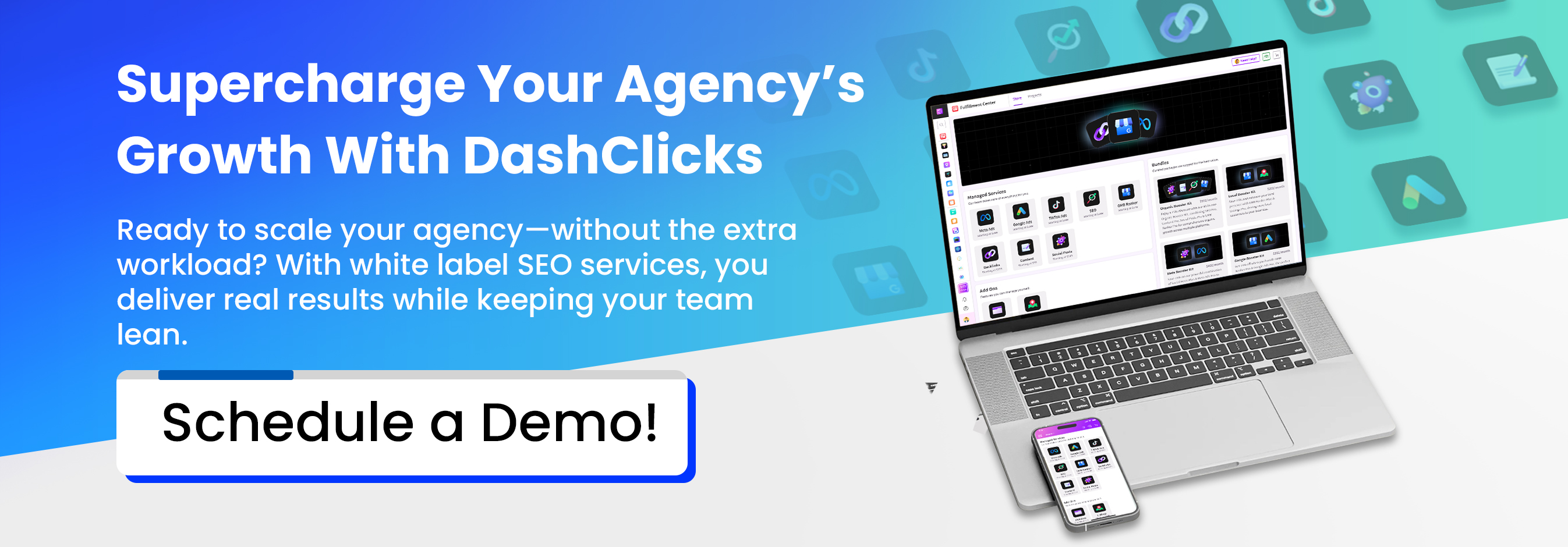

How White Label SEO Services Help Agencies Recover from Algorithm Penalties
For a digital agency, a Google algorithm penalty is more than just a technical issue—it’s a crisis. One day, your client’s website is ranking high, generating leads, and delivering on your promises. Next, it has vanished from the search results. Traffic plummets, revenue dries up, and the client trust you worked so hard to build begins to evaporate.
This scenario is a constant threat in the SEO world. Whether it’s a sudden drop from a core algorithm update or a direct manual action from Google, the result is the same: client panic and immense pressure on your agency to fix it. Agencies are uniquely exposed because penalties don’t just affect one client; they can impact your reputation, strain your resources, and lead to significant churn if not handled swiftly and effectively.
Navigating a penalty recovery is a complex, high-stakes process that requires specialized expertise and a cool head. This is where a white label SEO partner becomes an invaluable asset. This guide will explore how partnering with a white label SEO service can not only accelerate recovery but also turn a potential disaster into an opportunity to demonstrate your agency’s true value.
Understanding Algorithm Penalties and Their Consequences
A sudden drop in rankings is more than just a blip on a chart. For agencies, it’s a direct threat to stability. Traffic slows down, leads dry up, revenue takes a hit, and client confidence often disappears overnight. What makes penalties especially challenging is that they can strike at scale—affecting not just one client, but potentially many if the agency has relied on the same tactics across accounts.
There are two main types of “penalties” an agency might face:
1. Algorithmic Penalties
These happen automatically when Google rolls out an algorithm update. Core updates, spam updates, or changes tied to systems like the Helpful Content update can cause rankings to plummet. Agencies often don’t get notified about these, making them harder to diagnose. A client may call about a sudden traffic loss, and the agency must quickly connect the dots to the latest Google update.
2. Manual Actions
These are more explicit. A human reviewer at Google flags a site for violating guidelines. Common triggers include unnatural link building, thin or duplicate content, keyword stuffing, or cloaking. Unlike algorithmic drops, manual actions are communicated through Google Search Console, but the cleanup process can be slow and grueling.

Image Source: PRPosting
For an agency, the consequences of either type of penalty can be severe:
- Multi-Client Exposure: If your agency leans on outdated or high-risk SEO practices (such as aggressive link networks or templated thin content), one update can wipe out performance across your client base. Instead of handling one upset client, you may suddenly have ten.
- Reputation Risk: Clients hire agencies for stability, not volatility. A penalty signals negligence and damages the trust you’ve worked hard to build. Even if only one client is affected, word can spread quickly in industries where referrals matter.
- Client Churn: When rankings drop, clients panic. Without a clear and confident recovery strategy, many won’t wait around. They’ll move to competitors who promise a fresh start.
The ripple effects go beyond rankings.
- Ranking Loss → Traffic Collapse → Revenue Drop: A domino effect impacting business performance.
- Increased Paid Media Dependency: Clients may allocate more budget to paid ads to compensate for organic losses.
- Long Recovery Cycles: Restoring rankings can take months, affecting long-term performance.
- Legal/Contractual Issues: Missed KPIs in performance-based agreements can lead to disputes.
What took years to build can vanish overnight, while climbing back up can take months of careful work.
This isn’t just theory. A 2023 SEMrush survey found that 68% of SEOs were impacted by at least one Google update in the past year, with recovery timelines averaging three to six months.
And as Google algorithm expert Marie Haynes has pointed out, “Recoveries aren’t about quick tricks anymore. They’re about proving long-term quality, trust, and authority.”
In other words, penalties aren’t just technical hiccups. They test an agency’s resilience, adaptability, and ability to deliver sustainable best SEO practices. Agencies that prepare for them—not just react—are the ones that protect client relationships and keep their portfolios stable.
The White-Label SEO Advantage in Penalty Recovery
When a penalty hits, time is not on your side. Clients expect answers quickly, and the recovery process can be complex, requiring a mix of technical know-how, content expertise, and strategic planning. For most agencies, building this kind of capability internally is unrealistic—especially under pressure. This is where a white label SEO partner becomes invaluable.
1. On-Demand Specialist Teams: Penalties are rarely one-dimensional. You might need a link forensic analyst to audit backlinks, a technical SEO specialist to fix crawl or indexation issues, and a content strategist to address thin or low-quality pages. Hiring all of these roles in-house is expensive and time-consuming. With a white label partner, you gain instant access to specialists who already have years of experience handling similar recovery cases.
2. Established SOPs and Tools: Penalty recovery isn’t guesswork. It requires structured workflows, from backlink disavowals to content pruning and quality improvements. White label partners bring proven standard operating procedures (SOPs) and enterprise-level tools to the table, meaning there’s no delay in diagnosing issues or executing fixes. Instead of reinventing the wheel, you plug into processes that already work.
3. Scalable Bandwidth: Penalties often hit multiple clients at once, especially if outdated tactics were used across accounts. Handling one recovery in-house may be manageable, but juggling several at the same time can overwhelm even a seasoned SEO team. White label SEO fulfillment gives you the bandwidth to scale recovery efforts without sacrificing quality or speed.
4. Neutral Third-Party Status: Reconsideration requests and communication with Google can be sensitive. A neutral third-party can handle these technical submissions while your agency maintains a positive, client-facing role. This separation allows you to preserve your client relationship while ensuring that the behind-the-scenes recovery work is handled professionally.
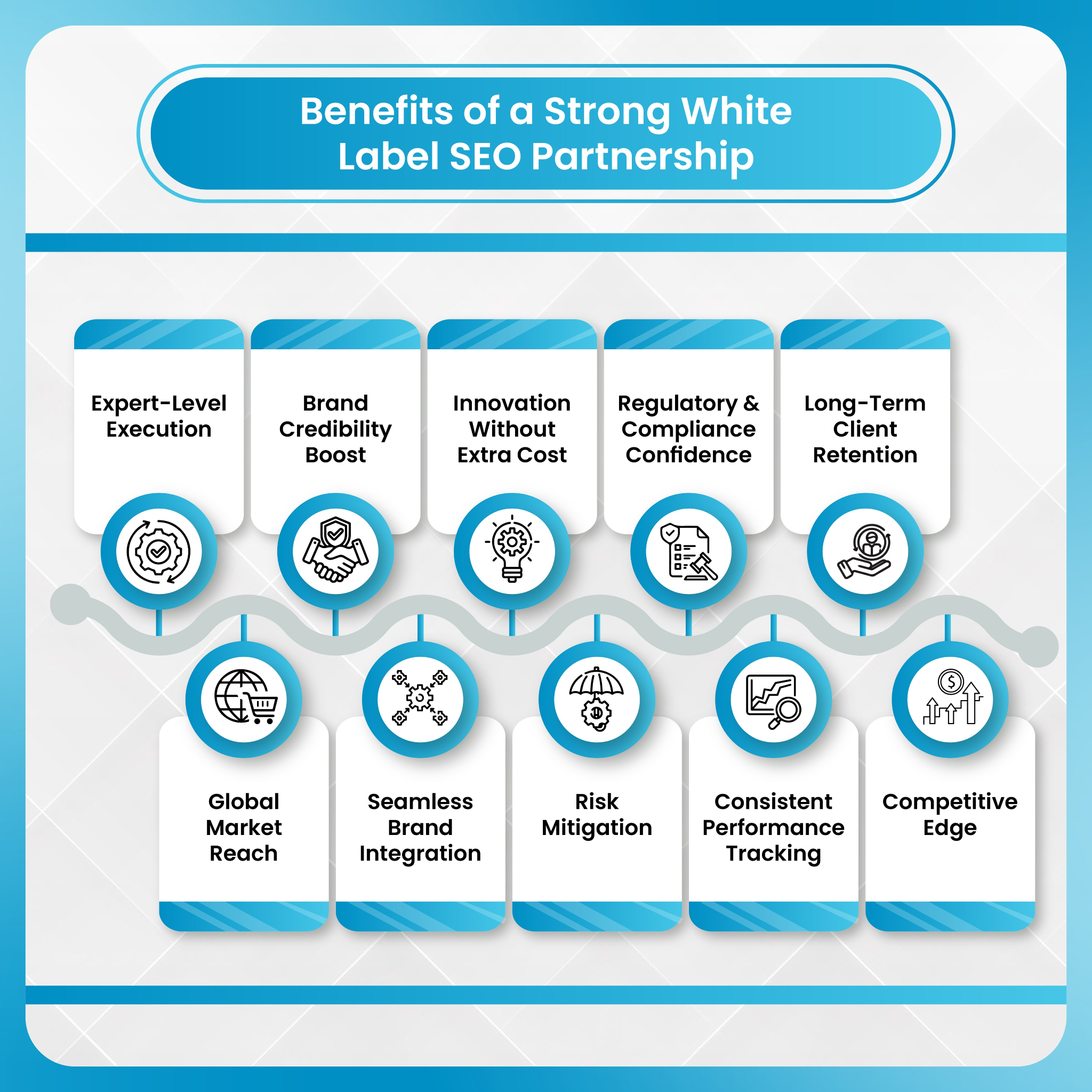
For agencies that want both protection and growth, white label partnerships go beyond damage control. They provide a way to reassure clients that no matter how tough the algorithm shifts may be, you have a plan.
Recovery Readiness: Vetting a White-Label SEO Partner
The worst time to start looking for a white label SEO partner is when a penalty has already hit. By then, clients are anxious, timelines are tight, and your agency is under pressure to deliver. The best time to prepare is before you need one. That way, when rankings suddenly drop, you already have a trusted partner who can step in immediately.
Here are the key factors to evaluate when choosing a white label SEO partner for penalty recovery:
1. Proven Recovery History: Not all agencies face the same challenges. An e-commerce site penalized for duplicate product descriptions requires different expertise than a local law firm hit by thin content or a YMYL (Your Money, Your Life) brand impacted by a core update. Look for a partner who can point to case studies or references in your clients’ verticals. Experience in the right niche often means faster, more effective recoveries.
2. Forensic Toolset: Penalty recovery requires more than just surface-level SEO checks. The right partner should have access to log file analyzers to track crawl behavior, backlink history tools to detect spammy patterns, and advanced crawlers that uncover technical weaknesses. These tools allow for precise diagnosis and reduce the risk of missing critical issues that could prolong recovery.
3. Emergency Response SLAs: When rankings vanish, every day counts. A strong partner should provide clear service-level agreements (SLAs) for response and turnaround times. This includes rapid audits, immediate monitoring, and timelines for submitting reconsideration requests. Fast, defined response times reassure your clients that you’re not only reactive but proactive in crises.
4. Defined Roles and Responsibilities: Penalty recovery involves multiple moving parts—technical fixes, link cleanups, content overhauls, and communication with Google. Clarity is essential. Your partner should spell out who handles which tasks, from drafting reconsideration requests to implementing content changes. This avoids confusion and ensures nothing falls through the cracks while you maintain control of the agency-client relationship.
5. Legal and IP Safeguards: In the rush to recover, it’s easy to overlook ownership issues. Make sure your partner has safeguards in place for content rights, intellectual property, and access credentials. Clients trust your agency with their data, and that trust extends to your white-label partner. Proper agreements protect both your agency and your clients from unnecessary risks.

Triage: The First 48–72 Hours Playbook
When a penalty hits, speed matters. A white label SEO partner’s immediate steps include:
- Rapid Baseline Snapshot: Quickly assess the impact by analyzing traffic drops, keyword rankings, and affected landing pages.
- Distinguish Algorithmic vs. Manual: Determine the nature of the penalty by checking Google Search Console messages and analyzing patterns of losses.
- Quick Technical Triage: Identify and address issues like crawl anomalies, indexation changes, and canonicalization problems.
- Fast Link Scan: Conduct a swift analysis to identify toxic link clusters, anchor text spikes, and link velocity anomalies.
- Client Communication Template: Develop a template to communicate with clients, providing a calm, honest, and transparent update on the situation and the steps being taken.
White label SEO partners deploy structured triage protocols to stabilize client campaigns while keeping communication clear and strategic.
Real-World Example: In a case study by Search Logistics, the team removed a client's penalty within a month by implementing a structured recovery plan. They re-indexed the site for main brand terms, achieving high positions for many targeted keywords. This swift action resulted in significant improvements in search traffic and rankings.
Deep Diagnostic: Separating Signal from Noise
After triage, the forensic work begins. Not every decline in rankings signals the same problem. Agencies need to distinguish between site-specific issues, algorithmic shifts, and competitive movements.
- Historic Backlink Provenance Mapping: Use historical index tools and backlink analysis tools to trace the origin and quality of backlinks.
- Anchor-Text Clustering: Employ machine learning techniques to identify manipulation patterns in anchor text.
- Log-File and Crawl Budget Analysis: Analyze server logs and crawl budgets to detect issues like crawl drops or redirect loops.
- SERP Feature Shift Analysis: Examine changes in SERP features to determine if the loss of rich results contributed to ranking drops.
- Content Quality Scoring at Scale: Implement heuristics to assess content quality, focusing on factors like E-E-A-T, thin content, and duplication.
- Competitor Differential Analysis: Compare the affected site's performance with competitors to identify algorithmic flux versus site-specific issues.
Real-World Example: In a case study by Infomaze, the team conducted a comprehensive SEO audit for a client affected by a Google penalty. They identified over 240 toxic backlinks and implemented a disavow strategy. Additionally, they optimized on-page SEO elements, leading to improved keyword rankings and organic traffic.
Remediation Tactics
Recovery isn’t achieved through guesswork; it requires precise, prioritized action. Agencies must tackle technical, content, and backlink issues strategically, focusing on high-impact fixes first:
- Technical Fixes: Address canonicalization, redirects, server errors, mobile usability, Core Web Vitals, and structured data issues.
- Content Remediation: Decide between pruning or consolidating content, rewriting low-quality pages, and enhancing author credentials and E-E-A-T signals.
- Link Remediation: Implement outreach and removal programs, develop disavow strategies, and handle manual actions with staged disclosures.
- Crawl & Index Management: Apply temporary noindex tags for thin pages, maintain sitemap hygiene, and manage URL parameters.
- Prioritization Matrix: Focus on fixes that yield the fastest traffic and conversion recovery, especially for high-impact landing pages.
Manual Action Handling
Manual actions require precise, well-documented responses:
- Reconsideration Packages Construction: Develop a comprehensive reconsideration request that includes cleanup timelines, link removal evidence, and updated policies.
- Outreach Logs Templates: Maintain detailed records of outreach attempts and responses during the recovery process to prove removal attempts and escalate unresponsive cases.
- Disavow Files: Use Google’s disavow tool judiciously, crafted carefully with staged, documented submissions.
- Expectation Management: Since Google favors transparency and sustained effort over shortcuts, set realistic expectations with clients regarding the recovery timeline and the steps involved.
Communications & Retention
Penalties can shake client confidence. Keeping clients calm is just as important as technical fixes:
- Reporting Cadence: Establish a regular reporting schedule, starting with daily updates during the initial triage phase, transitioning to weekly progress reports, and monthly stabilization updates.
- Transparent KPIs: Share key performance indicators like indexation, crawl rate, and top-term recovery, not just traffic, to demonstrate progress.
- Positioning Value: Show clients that your agency navigated the crisis, turning a penalty into proof of resilience.
- Contract Language: Update contracts to include clauses covering penalty recovery work and revised SLAs to manage client expectations.

Real-World Example:
In a case study by IceCube Digital, the team helped a client recover from a Google algorithm penalty by implementing fresh-thinking methods. They communicated the process transparently with the client, leading to a 163% increase in organic traffic over five months.
Rebuilding Long-Term Resilience
Recovery isn’t enough; agencies must harden against future penalties:
- Governance Playbooks: Develop and implement editorial policies, content sign-offs, and link acquisition standards to prevent future penalties.
- Ongoing Monitoring: Set up automated anomaly detection for traffic, backlinks, and anchor text patterns, and conduct periodic health audits.
- Diversified Traffic Mix: Combine organic recovery efforts with paid advertising and other strategies to stabilize revenue during the recovery period.
- Knowledge Transfer: Ensure that the white label SEO partner documents fixes and processes to enable the agency's staff to operate autonomously in the future.
Measuring Effectiveness, Vertical Fit, and Reproducible Recovery Processes
Recovering from a Google penalty is only meaningful if agencies can measure results, apply lessons to different industries, and have a structured playbook for future incidents. White label SEO services provide not only hands-on recovery but also tools and frameworks that make these processes reproducible, measurable, and industry-specific.
1. Proof of Effectiveness
Before engaging a white-label partner, agencies should verify that their strategies deliver measurable results. This includes:
KPIs to Track:
- Time-to-Detect: How quickly the penalty was identified after the drop.
- Time-to-First-Positive-Signal: When initial traffic or ranking improvements were observed.
- Full Recovery Timeline: How long it took to regain target keyword rankings and traffic.
Conversion Metrics: Recovery of leads or revenue tied to organic search.
Case Example: A SaaS client penalized for thin content recovered 80% of its top 20 keyword rankings within 3 months after the white-label partner implemented content consolidation and structured data fixes. Traffic rose by 67%, and organic conversions increased by 42% over the next 6 months.
2. Niche & Vertical Considerations
Penalties do not impact all industries equally. Agencies must ensure their white-label partner understands vertical-specific nuances:
- YMYL & Healthcare: Author credentials, clinical review workflows, citations, and legal disclaimers.
- E-commerce: Product schema optimization, seasonal inventory indexing, canonical product variants, and review syndication.
- Local Services & Law Firms: Citation cleanup, NAP consistency, review audits, and local SEO best practices.
- SaaS Platforms: Managing dynamic content, faceted navigation, and content portals to prevent thin-content flags.
Partners with vertical experience can accelerate recovery by applying lessons from similar clients, minimizing trial-and-error, and aligning with Google’s quality standards from day one.
3. What Success Looks Like?
Agencies should define clear short, mid, and long-term KPIs to assess penalty recovery:
Early Wins (Weeks 1–4):
- Indexation fixes for high-priority pages.
- Reduction in 404 errors and server issues.
- Initial content quality improvements reflected in search visibility.
Mid-Term Recovery (Months 2–6):
- Gradual SERP recovery for target terms.
- Traffic stabilization across affected landing pages.
- Measurable improvement in engagement metrics (time on site, bounce rate).
Long-Term Resilience (Months 6–12):
- Sustained ranking improvements.
- Restoration and growth of organic conversions.
- Implementation of governance policies and monitoring systems to prevent future penalties.
Example KPI Snapshot:
- Pages remediated: 150
- Toxic links removed/disavowed: 420
- Recovery of top 10 keyword rankings: 85%
- Organic sessions recovery: +60%
- Conversion rate improvement: +35%
4. Reproducible Checklist for Agencies
Having a structured checklist ensures agencies can replicate successful recovery strategies across clients:
Quick Triage:
- Check Google Search Console for manual actions and messages.
- Map traffic and ranking drops by landing page.
- Confirm algorithmic vs. manual penalty type.
Forensic Analysis:
- Conduct anchor text clustering and link velocity checks.
- Audit content quality (E-E-A-T, duplication, thin content).
- Review historical backlinks using index snapshots and archives.
Remediation Actions:
- Implement technical fixes (canonicalization, redirects, server errors).
- Optimize or consolidate content, strengthen author credentials.
- Conduct link outreach, removal, or staged disavow as needed.
Client Communication:
- Provide transparent updates (daily triage → weekly progress → monthly stabilization).
- Present KPIs in a clear, agency-branded format.
- Document processes to maintain trust and allow client visibility without overloading them with technical details.
By combining measurable recovery strategies, vertical-specific expertise, and structured playbooks, agencies can ensure that penalty remediation is both effective and repeatable. However, executing these processes in-house can be resource-intensive and time-consuming.
DashClicks’ white label SEO services empower digital marketing agencies to recover from Google algorithm penalties, improve rankings, and maintain client trust without expanding in-house teams. Our expert teams handle technical audits, content optimization, backlink remediation, and penalty recovery strategies, ensuring agencies can deliver consistent results across clients.
With vertical-specific expertise, advanced tools, and structured workflows, DashClicks helps agencies turn crisis management into a value-added service, enhancing retention and long-term client satisfaction.
Conclusion: Turning Crisis into Opportunity
Algorithm penalties are a real threat to agencies, impacting traffic, revenue, and client trust. Timely recovery is essential, and partnering with a white label SEO provider gives agencies access to specialized expertise, scalable resources, and proven frameworks to respond efficiently to both algorithmic and manual penalties.
Early triage, deep diagnostics, and prioritized remediation restore visibility quickly, while transparent communication and clear KPIs help maintain client confidence. Structured workflows, forensic analysis, and standardized checklists position agencies as strategic partners rather than reactive service providers.
Long-term resilience comes from implementing governance protocols, ongoing monitoring, and knowledge transfer. By framing penalty recovery as a value-added service, agencies can preserve client relationships, differentiate themselves in a competitive market, and turn potential crises into opportunities for growth and trust-building.


10 Myths About White Label PPC Management Services
In the fast-moving world of digital advertising, pay-per-click (PPC) campaigns are one of the most powerful ways for businesses to drive traffic, generate leads, and boost revenue. For agencies, though, managing PPC campaigns in-house can be costly, time-intensive, and difficult to scale. This is where white label PPC management comes in.
Despite its benefits, many agencies hesitate to outsource PPC because of misinformation. Myths about outsourcing—ranging from quality concerns to fears of losing client control—hold agencies back from growth opportunities.
And the stakes are high. A 2023 study by ASK BOSCO and OnePoll revealed that 75% of businesses have stopped or considered stopping a partnership due to a lack of transparency in reporting. That means agencies need not only to deliver results but also to maintain trust and visibility. Misunderstanding how white label PPC works can make agencies miss the chance to improve both.
In this article, we’ll break down the 10 most common myths about white label PPC management and uncover the truth. By the end, you’ll see how this model can help agencies scale profitably while staying in full control of client relationships.
Myth 1: White Label PPC Means Losing Control Over Clients
One of the biggest misconceptions is that outsourcing PPC means handing clients over to someone else. Many agency owners fear they’ll lose visibility or authority in the process.
Reality: White label PPC providers act as invisible partners. You remain the face of your agency. Clients never interact with the provider directly unless you choose to set it up that way.
- Branded dashboards let clients log in and see reports with your agency’s logo.
- NDA agreements ensure the provider cannot bypass you to contact your clients.
- Communication protocols mean the provider handles execution while you remain the strategist and relationship owner.
Transparency matters most here. According to the AgencyAnalytics Benchmarks report, communication and transparency are the top factors influencing client retention. With the right provider, you not only stay in control but also strengthen client trust.
Example: Imagine an agency managing PPC for a chain of dental clinics. By outsourcing execution while controlling reporting and strategy, the agency avoids burnout, keeps the client happy, and positions itself as the trusted strategist.
Myth 2: White Label PPC Is Just “Cookie-Cutter” Campaigns
Another common belief is that providers deliver generic, one-size-fits-all campaigns that don’t account for niche differences.
Reality: Quality PPC outsourcing services are highly customizable. They adapt strategies to fit each client’s industry, target audience, and goals.
For example:
- Healthcare Compliance-friendly ad copy, local targeting, and patient acquisition strategies.
- A law firm’s PPC strategy might focus on local lead generation with high-intent keywords like “injury attorney near me.”
- An eCommerce brand may prioritize shopping ads, retargeting, and seasonal offers.
- A SaaS company could benefit from long-tail keywords targeting problem-specific queries, along with conversion-focused landing pages.
In fact, vertical-specific strategies have become a competitive necessity. Industry consultants emphasize that providers must demonstrate results in particular niches. Agencies should demand case studies or benchmarks showing performance in similar industries.
Expansion Tip for Agencies: Use white label PPC providers to break into new verticals quickly. Instead of spending months learning the intricacies of healthcare or SaaS, you can launch with tested playbooks and immediately appear industry-savvy to prospects.
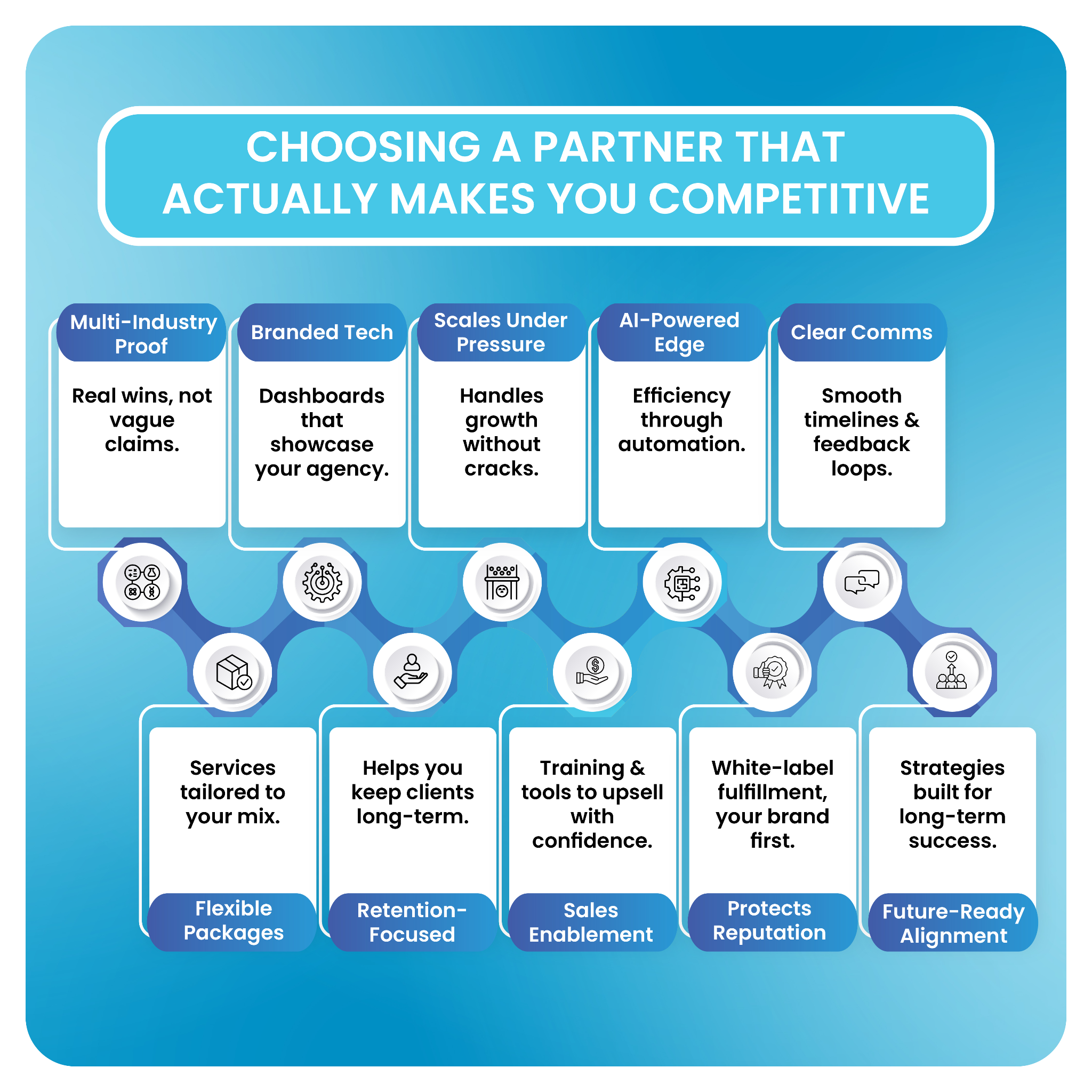
Myth 3: It’s Too Expensive for Small to Mid-Sized Agencies
Many smaller agencies assume that outsourcing PPC is financially out of reach.
Reality: Outsourcing often results in cost savings compared to hiring in-house staff.
Here’s a cost breakdown:
- Hiring one certified PPC specialist can cost $55,000 to $75,000 annually in the U.S., excluding benefits, tools, and training.
- Building a team multiplies these expenses quickly.
- With white label PPC, agencies pay per campaign or per client, turning fixed staffing costs into flexible, variable costs.
This makes outsourcing scalable. Smaller agencies can serve more clients without overextending resources. In the long run, they deliver expert-level PPC while protecting profit margins.
Scenario: An agency with 5 in-house PPC accounts wants to scale to 20. Hiring additional staff could double overhead. With a provider, the agency simply pays per campaign, protecting margins while serving more clients.
Myth 4: Clients Will Know I’m Outsourcing
Some agency owners worry that if clients discover outsourcing, they’ll lose credibility.
Reality: White label PPC is built to be seamless. Providers stay invisible, and everything is presented under the agency’s brand.
- Reports are delivered with your branding.
- Client meetings and calls happen through you.
- Many providers even use white-labeled communication tools like DashClicks Conversations software, so every touchpoint reflects your agency.
Most importantly, clients care about results, not execution details. If leads are coming in and ROI is clear, the question of “who runs the ads” rarely matters.
Myth 5: White Label PPC Lacks Transparency
Transparency is one of the biggest concerns when outsourcing. Agencies fear they’ll lose visibility into campaigns.
Reality: The opposite is true with the right provider. White label PPC platforms now include real-time dashboards like DashClicks’ white label dashboard software that agencies can share directly with clients.
Clients see:
- Daily ad spend
- Conversions and cost-per-acquisition
- Keyword performance and audience insights
This makes reporting a selling point. Instead of scrambling to build reports manually, agencies can give clients immediate access to live performance data. This builds trust and helps prevent churn.
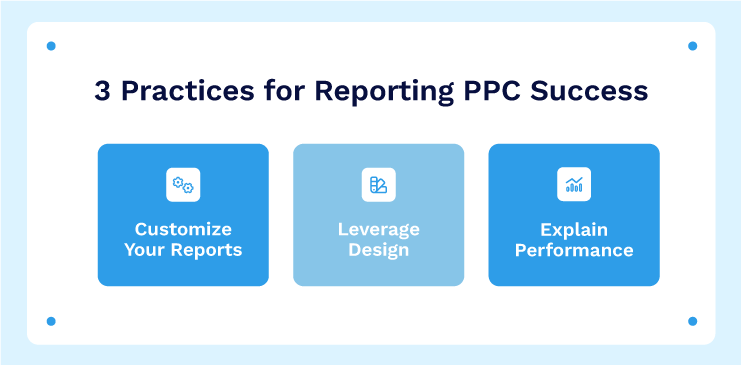
Image Source: AdClicks
Further Reading: PPC Reporting Strategies: 11 Things You Should Include in a PPC Report
Myth 6: White Label PPC Providers Don’t Understand My Clients’ Industries
Agencies often think a third-party team won’t “get” their client’s business model.
Reality: Many white label PPC providers specialize in verticals. They develop proven strategies for industries such as healthcare, legal, SaaS, real estate, or e-commerce.
For example:
- In healthcare, ad copy must meet compliance standards while targeting patients in a specific region.
- In legal services, campaigns may focus on high-value keywords with strong intent.
- In SaaS, strategies often combine PPC with free trial funnels and retargeting sequences.
Agencies should always request vertical-specific proof—such as case studies or performance benchmarks. The more niche-ready the provider, the more effectively they can support your agency.
Myth 7: Campaign Quality Suffers Compared to In-House Management
Some agencies worry that outsourcing means giving up quality.
Reality: White label PPC teams are often staffed with Google Ads and Meta Ads-certified professionals who manage campaigns across industries daily.
Their advantages include:
- Access to enterprise-level tools for PPC keyword research and bid management.
- Advanced A/B testing frameworks to continuously optimize campaigns.
- Experience managing diverse accounts, which builds efficiency and expertise.
Consistency is another benefit. In-house teams are vulnerable to turnover, sick days, or burnout. Providers, on the other hand, operate with systems that ensure campaigns remain stable and optimized.
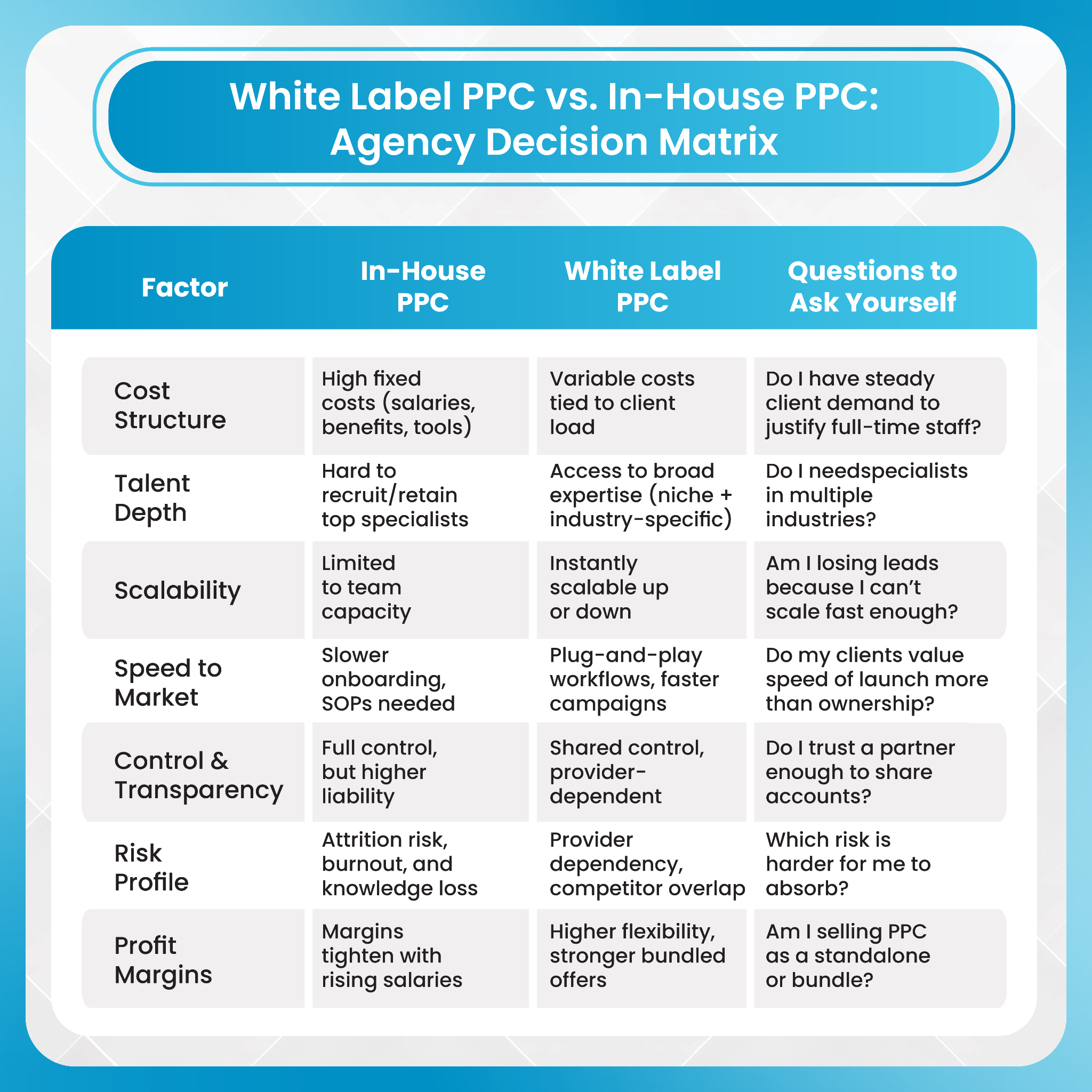
Myth 8: Scaling with White Label PPC Creates Bottlenecks
Agencies sometimes think outsourcing could slow them down as they scale.
Reality: White label PPC is designed for scalability. Providers use standard operating procedures, automation, and account managers to handle growth smoothly.
The PPC industry itself proves the scalability of outsourcing. Businesses now spend over $200 billion annually on paid search ads worldwide. Agencies that outsource PPC can take on dozens of clients at once without needing to hire or train more staff.
A practical example: an agency managing 5 PPC accounts in-house could struggle to grow to 50 accounts. With outsourcing, they can expand without adding headcount or overhead.
Myth 9: White Label PPC Means No Agency Differentiation
Some believe outsourcing makes agencies “blend in” with competitors.
Reality: White label PPC lets agencies differentiate in smarter ways.
You control the positioning, not the provider. For example:
- Package PPC with SEO, web design, or social media marketing.
- Specialize in industries like dental practices, SaaS companies, or local retailers.
- Experiment with performance-based pricing models that stand out from flat fees.
The provider is the execution engine, but the agency tells the story, builds the brand, and owns the client experience.
Myth 10: It’s a Short-Term Fix, Not a Long-Term Strategy
Some agencies see white label PPC as a temporary patch.
Reality: White label PPC management can be a foundation for long-term growth.
By outsourcing, agencies free up time to focus on client strategy, upselling, and retention. Over time, this builds recurring revenue models such as retainers, compounding campaign results, and higher client lifetime value.
Agencies that adopt white label PPC as part of their strategy often scale faster than those trying to manage everything in-house. Instead of being a short-term fix, it becomes a lever for sustainable growth.
The Agency Advantage: Why Myths Hold You Back
The biggest danger of these myths isn’t that they’re wrong—it’s that they stop agencies from scaling.
- While one agency struggles to hire, another scales to 50+ accounts overnight.
- While one agency loses clients to churn, another locks in 18-month retainers with confidence.
- While one agency spends $150k/year on staffing, another gains access to full teams for a fraction of the cost.
Agencies that embrace white label PPC don’t just survive—they thrive by creating a model that’s scalable, profitable, and retention-focused.
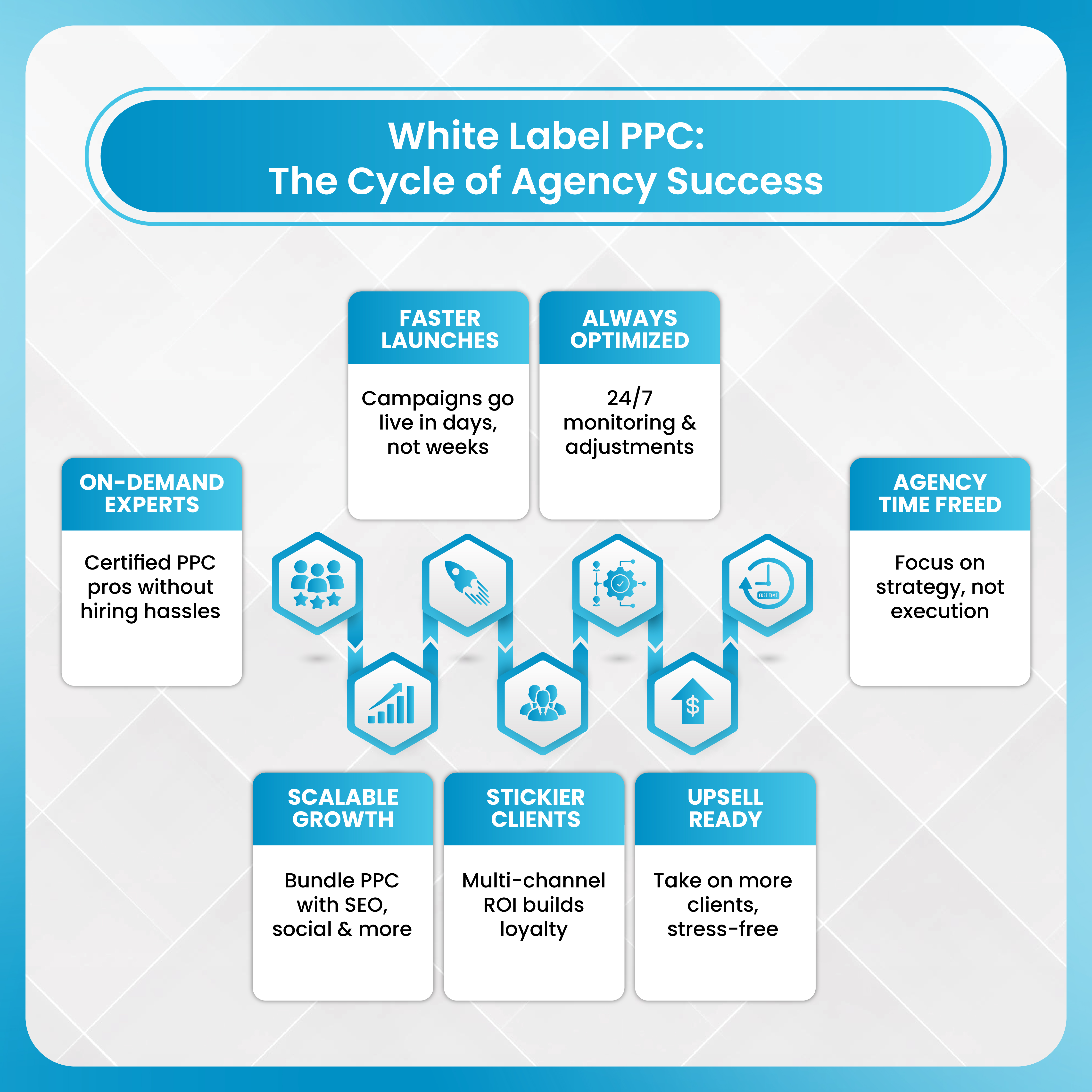
How DashClicks Simplifies White Label PPC for Agencies?
At DashClicks, we understand the hesitation agencies feel when considering white label PPC management. The myths we’ve discussed—about control, quality, transparency, or scalability—are the very challenges we’ve built our services to solve. Our goal is simple: give agencies the tools, expertise, and infrastructure they need to grow without being weighed down by execution.
Here’s how we address each of the top concerns in practice:
1. Client Control
One of the biggest myths is that PPC outsourcing means losing control over your client relationships. We flip that idea on its head. Agencies remain the sole client-facing brand at every step. We provide fully branded dashboards, white-labeled reporting, and invisible backend support, so your clients only see your agency’s name. You make the decisions, you own the communication, and you maintain full control of the relationship. We simply provide the muscle behind the scenes to ensure campaigns run flawlessly.
2. Customization
Another misconception is that outsourced PPC means cookie-cutter campaigns. Customization is a our core focus. We tailor campaigns based on industry, audience, and business goals. For a healthcare client, this might mean compliance-driven ad copy and location targeting.
For an eCommerce store, it may involve product listing ads, retargeting campaigns, and seasonal promotions. For SaaS companies, our specialists design strategies around free trials, demos, and subscription growth. By adjusting strategies to fit vertical-specific needs, we help agencies deliver bespoke PPC solutions instead of generic setups.
3. Transparency
As mentioned above, 75% of businesses consider leaving partnerships due to a lack of transparency. We’ve built our platform to eliminate that concern.
With real-time reporting tools, agencies and their clients can log in 24/7 to view campaign data, ad spend, conversions, and ROI. There’s no guesswork, no vague reporting, and no hidden metrics. This level of visibility transforms transparency from a challenge into a competitive advantage.
4. Scalability
Scaling is where many agencies hit roadblocks. Hiring and training in-house PPC specialists takes time and resources, making it difficult to keep up with new clients. We solve this by giving agencies access to a team of certified PPC professionals who can seamlessly manage campaigns at any scale.
Whether you’re handling 5 accounts or 50, our systems, standard operating procedures, and dedicated account managers ensure there are no bottlenecks. This means agencies can confidently pitch and onboard more clients without worrying about internal limitations.
5. Consistency
In-house teams are vulnerable to turnover, training gaps, and shifting priorities. This inconsistency can hurt campaign performance and client trust. We remove that risk by providing agencies with a dedicated team of certified Google Ads and Meta Ads specialists who ensure campaigns are optimized continuously. No vacations, no resignations, no downtime—just consistent execution and measurable results.
The Bigger Picture
What sets DashClicks apart isn’t just the technology or expertise. It’s the way we position agencies to succeed long-term. By taking execution off your plate, we free your team to focus on what matters most: building relationships, refining strategy, upselling services, and growing your brand. Instead of getting buried in keyword research, ad copy, or bid adjustments, you can put your energy into being the trusted advisor your clients need.
At its core, DashClicks acts as a silent growth partner. We don’t replace your agency; we empower it. The myths around white label PPC only hold agencies back from this opportunity. By partnering with us, you can put those concerns to rest and unlock a clearer, more scalable path to growth.
Conclusion
The myths surrounding white label PPC—about control, quality, transparency, or scalability—are barriers that hold agencies back. In reality, outsourcing is one of the most effective ways for digital marketing agencies to scale profitably while delivering consistent, transparent, and industry-specific results.
White label PPC is not about giving up control—it’s about gaining the freedom to grow smarter and faster. By busting the myths, agencies can see it for what it is: a scalable, transparent, and cost-effective way to deliver expert-level PPC services. By partnering with the right provider, agencies gain the freedom to grow smarter, faster, and with less risk.
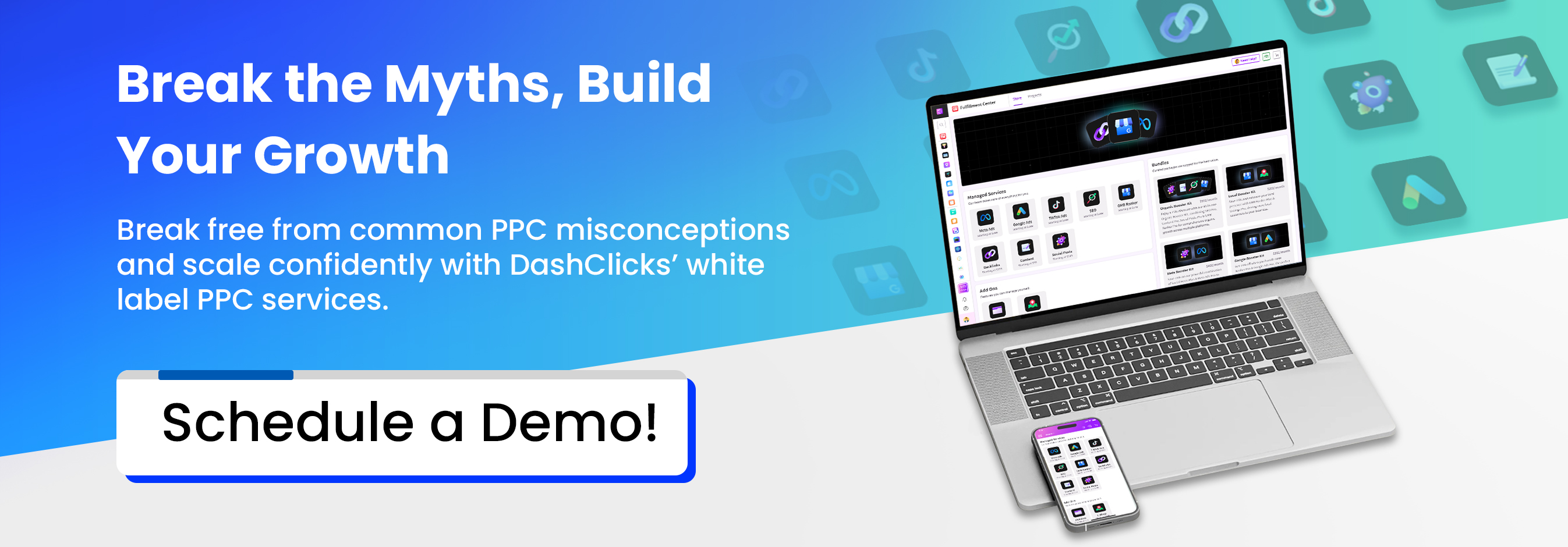

How White Label Facebook Ads Boost Client Retention for Agencies
For any digital marketing agency, growth often feels like a numbers game focused on acquiring new clients. While bringing in new business is essential, the real engine of sustainable growth and profitability is client retention. Acquiring a new customer can cost five times more than retaining an existing one. More importantly, research shows that improving customer retention rates by just 5% can increase profits by anywhere from 25% to 95%.
Facebook Ads remain a powerhouse for delivering long-term performance, but they are also a common source of client churn for agencies. Clients often leave due to inconsistent results, a perceived lack of expertise from the agency, or poor communication about campaign performance. When the results of a "feast or famine" campaign dry up, so does the client relationship.
This is where white label Facebook Ads services emerge as a strategic solution. By partnering with a specialized provider, agencies can solve the core issues that lead to churn. A white-label partner provides the expertise, consistency, and transparent reporting needed to keep clients happy and invested for the long haul, transforming a potential weakness into a powerful retention tool.
Why Agencies Lose Clients?
Some of the main reasons agencies lose clients include:
- Inconsistent results (campaigns that do well one month and poorly the next).
- Lack of expertise or inability to keep up with Facebook’s changing ad policies, ad formats, and auction mechanics.
- Poor communication, clients don’t understand what is happening or feel left in the dark.
- Delayed or subpar creative, testing, or optimization.
These issues erode trust. Once trust is gone, clients are quick to look elsewhere, even for only slightly better performance.
White Label Facebook Ads as a Solution to Stabilize Retention
White label Facebook advertising partners can solve many of the problems causing churn. With the right partner, your agency leverages proven frameworks, reliable service delivery, expert creative/testing, communication tools, and responsive optimization. All under your agency’s brand — making you appear consistent, knowledgeable, and dependable to clients.
How White-Label Partners Drive Client Retention?
Below are the ways having a white label partner for Facebook ads services helps keep clients longer, more satisfied, and more loyal.
1. Delivering Consistency When In-House Teams Struggle
In-house teams, especially smaller ones, can be stretched thin. This often leads to "feast or famine" campaigns where great results are followed by disappointing lulls.
White label Facebook ads partners operate differently. They use proven Standard Operating Procedures (SOPs), battle-tested frameworks, and automation to ensure performance is reliable.
When campaigns perform in a predictable way (within agreed benchmarks or SLAs), clients feel confident. That perception of predictability reduces churn risk because the client isn’t constantly worried about dips or “experiments” gone wrong.
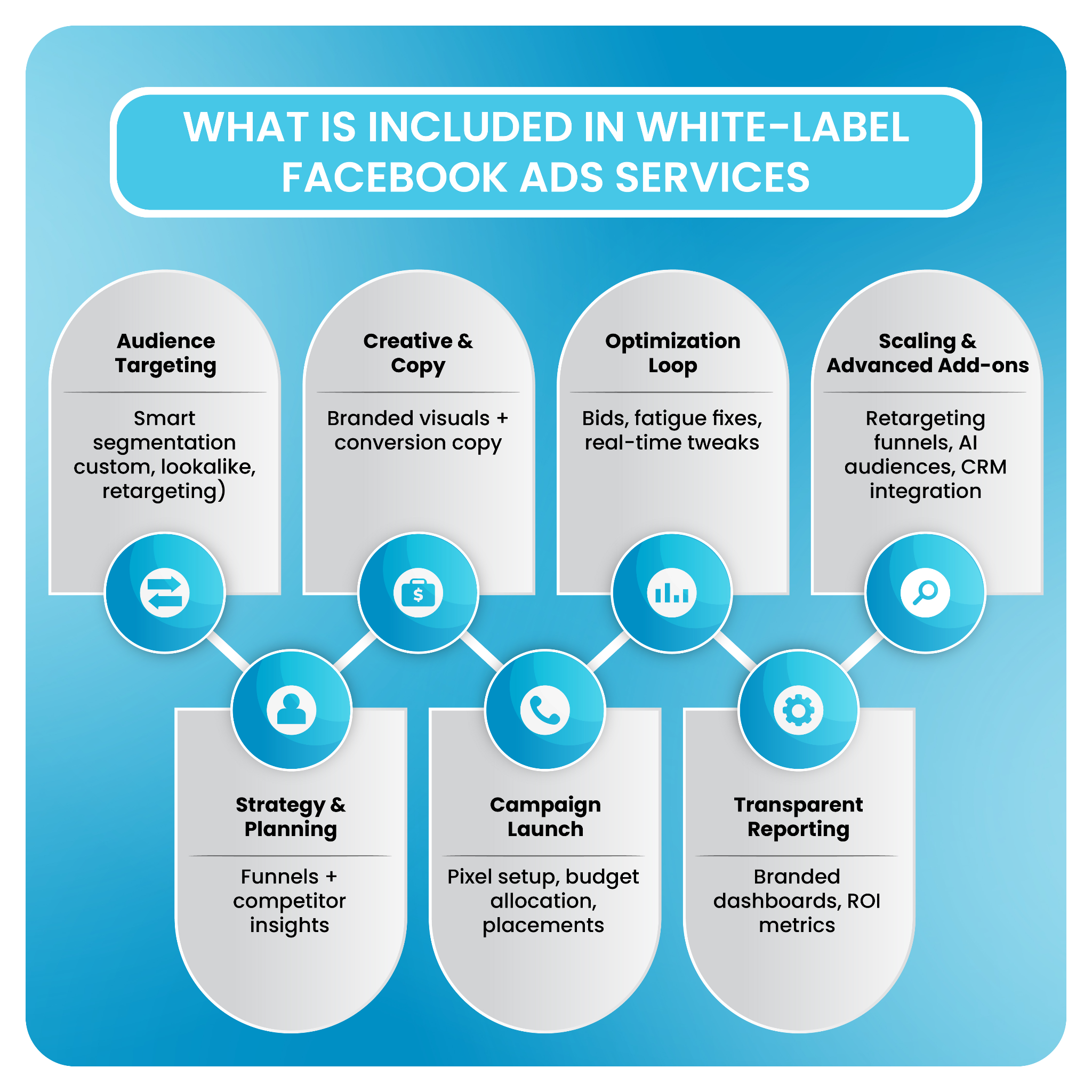
2. Achieving Faster, Smarter Results That Reduce Churn
The first 90 days of any agency-client relationship are critical. Clients want to see a return on their investment quickly. Many white label providers have pre-tested frameworks (audience structures, creative formats, ad copy templates), and they can often produce initial performance faster. Early wins matter.
For example:
- Getting good cost-per-click (CPC) or return on ad spend (ROAS) in the first 30-60 days helps reassure the client that they’ve made the right choice.
- Using creative variants and targeting splits built from past data means less time wasted on trial and error.
As per the latest benchmarks from TripleWhale for Facebook Ads (Nov-Dec 2024 vs Oct-Nov 2024), ROAS across industries increased by ~11.6% to ~2.79, while conversion rates jumped ~32%, and cost-per-action dropped modestly.
Those kinds of improvements early set the tone: clients see real value quickly, reducing their impulse to switch.
3. Building Trust Through Branded Transparency
One of the biggest pain points for clients is not knowing how their money is being spent or what results it's generating.
One of the strengths of white label Facebook advertising is that even though a partner handles execution, the agency’s branding remains front and center:
- Dashboards and reports carry your agency’s name, formatting, and style.
- Clients see live ad performance (or at least near-real time) through white labeled dashboards.
- Reporting that is consistent, comprehensible, and aligned with the client’s expectations builds trust.
These reports carry your agency's branding, reinforcing the idea that you are the one delivering the results. When clients can clearly see the ROI and connect it directly to your agency, their loyalty deepens.
4. Proactive Crisis Handling That Inspires Confidence
What happens when a campaign suddenly tanks, Cost Per Mille (CPM) spikes, or a new Facebook policy throws a wrench in the works? When something goes wrong, clients want the agency to respond quickly and assertively. An agency scrambling for answers loses client confidence.
White label partners, especially those experienced in Facebook ad services, often have:
- Monitoring systems
- Predefined escalation paths
- Knowledge of policy, compliance, or platform risk mitigation
A white label partner has dedicated teams that have seen it all. They can respond rapidly to platform glitches and policy shifts, navigating crises proactively. Clients stick with agencies that can "save the day" and protect their investment.
5. Offering an Exclusive Insider Advantage
Many white label providers stay close to Facebook / Meta’s ecosystem: early access beta tools, insights from supported partners, updated training on new features, etc. Agencies using those providers can offer “cutting-edge” strategies: new ad formats, experimental placements, updated measurement tools.
This creates a powerful sense of exclusivity that strengthens client retention. Clients feel they are getting a special advantage by working with you, making your agency an indispensable part of their growth strategy.
6. Ensuring Continuity Without Staffing Risks
High employee turnover can cripple an in-house ads team and derail client campaigns: slow optimization, missed deadlines, and creative delays. When a key team member leaves, knowledge is lost and performance often suffers.
A white label provider eliminates this risk. They ensure campaigns are continuously optimized regardless of your internal staffing changes.
Clients value this reliability and are more likely to stay for the long term when service delivery is seamless and uninterrupted.

7. Protecting Campaigns with Compliance Expertise
For clients in sensitive industries like healthcare, finance, or education, ad compliance is non-negotiable. Facebook ads can trigger disapprovals, misclassifications, or worse, account bans. A disapproved ad or a banned account can be catastrophic.
White label teams with domain experience stay up to date with policy changes, employ compliance experts who understand the intricate rules of these regulated sectors, know how to structure ads to meet legal constraints, and manage compliance (e.g., data privacy, claim substantiation, prohibited content).
When clients know their campaigns won’t suddenly be shut down or penalized, trust deepens.
8. Always-On Monitoring for Total Peace of Mind
The digital ad space never sleeps, but your in-house team does. Problems can arise outside business hours: creative flagging, account notifications, ad disapproval, budget misallocation, wasted spend overnight, or during holidays if a campaign goes off the rails.
White label partners often provide global or follow-the-sun monitoring. That means someone is always watching performance, delivery, and policy status. This round-the-clock vigilance protects client budgets, and clients appreciate the agency being proactive rather than reactive. This provides invaluable peace of mind for both you and your client.
9. Using Benchmarking to Reinforce Your Value
One of the biggest trust builders is comparative benchmarks: showing a client how their performance stacks up versus peers in their industry, or versus past periods with similar budget or objectives.
White label providers often run many campaigns across industries. They gather performance data (CPCs, CPAs, ROAS, CPMs, creative engagement rates, etc.). Agencies can leverage that to set realistic targets and show that what the client is getting is good (or outstanding) relative to the market.
When clients see that their results are not only improving but are above industry averages, they are more likely to stay.
Recent Data: For example, the average customer retention rate across industries is about 75.5%. Media and Professional Services lead with ~84%.
10. Scaling Services Without "Guinea Pig" Risk
Scaling ads too aggressively, too soon, often leads to wasted spend and underperforming campaigns. Clients feel experimented on. This erodes trust.
White label Facebook ads partners tend to bring proven scaling frameworks — allowing you to launch a new service with maturity and expertise from day one. Your clients' campaigns are managed by seasoned professionals, not treated as experiments.
This allows you to scale your agency's offerings confidently, knowing your clients are receiving a best-in-class service from the start.
11. Turning Deep Audience Insights into a Retention Hook
A great ad campaign delivers more than just leads—it delivers data. Beyond raw ad metrics, white label partners often accumulate deep behavioral insights about your client's target audience: interest overlap, creative preferences, ad fatigue timing, best performing placements, engagement decay, etc.
These insights can help inform not just the ad strategy, but product positioning, messaging, when to pivot, and even suggest new markets for clients. Your agency can then use this data to provide strategic recommendations.
Clients see an agency that’s contributing to their strategic growth, not just delivering clicks or leads — that turns the relationship from vendor → true growth partner, which improves retention.

Image Source: Influee
12. Providing a Fail-Safe with Backup and Redundancy
Ad accounts may be flagged, suspended, or compromised, and campaigns can be rejected for reasons that aren't always clear. Creatives may break, ads may be disapproved. Pixels, tracking, and billing issues may happen.
White label partners often have protocols in place for these worst-case scenarios:
- Backup ad accounts or ad sets.
- Alternate creatives, designs ready to swap.
- Duplicate tracking constructs, redundant Facebook pixel, or backup measurement setups.
- Well-defined recovery workflows.
Clients trust agencies that can guarantee minimal downtime and have a plan for when things go wrong. That reliability is a big retention lever.
How DashClicks’ Facebook Ads Services Help Maximize Retention?
A partner like DashClicks gives agencies the confidence to deliver Facebook Ads as a premium service without the heavy lift of building out an entire department. Their white-label model allows you to present fully managed campaigns under your own brand, creating the seamless experience clients expect.
DashClicks’ Facebook ads services integrate directly into your workflows, offering:
- Branded reporting dashboards that provide clients with real-time campaign insights.
- Data-driven campaign strategies built by experienced Facebook Ads professionals.
- Scalable support that grows with your client base, without increasing your overhead.
By combining consistent performance, transparent reporting, and deep expertise, DashClicks transforms Facebook Ads into more than just a service—it becomes one of your strongest retention tools. Clients stay longer because they see the value clearly, and your agency benefits from predictable revenue, stronger relationships, and a reputation for results.
Retention Is About Confidence, Not Just Clicks
At the heart of client retention is confidence. Clients don’t just want clicks or impressions—they want assurance that their investment is safe, their campaigns are being managed with expertise, and their agency is looking out for their long-term success.
White-label Facebook Ads services give agencies the power to deliver that confidence. Instead of struggling to keep up with platform changes or stretching thin with in-house resources, you can rely on a dedicated team of specialists who treat every campaign as a strategic opportunity. The result is stability, innovation, and protection from common pitfalls that might otherwise cause clients to lose trust.
By transforming your Facebook Ads offering from a potential risk into a proven strength, you reposition your agency. You’re no longer just a service provider competing on cost or short-term wins—you become a strategic partner who plays an essential role in your clients’ growth.
This shift has a ripple effect:
- Reduced Churn: Clients stay longer because they consistently see measurable results.
- Increased Trust: Transparent reporting and expert execution build credibility.
- Expanded Opportunities: Confident clients are far more open to investing in additional services.
Retention, then, is not about chasing quick wins—it’s about showing clients you can deliver reliable, forward-looking strategies that protect and grow their business.
If you’re ready to turn Facebook Ads into one of your agency’s strongest retention tools, a white-label partnership is the smartest way forward. With the right partner, you gain the infrastructure and expertise to deliver results that keep clients loyal, engaged, and eager to grow with you.
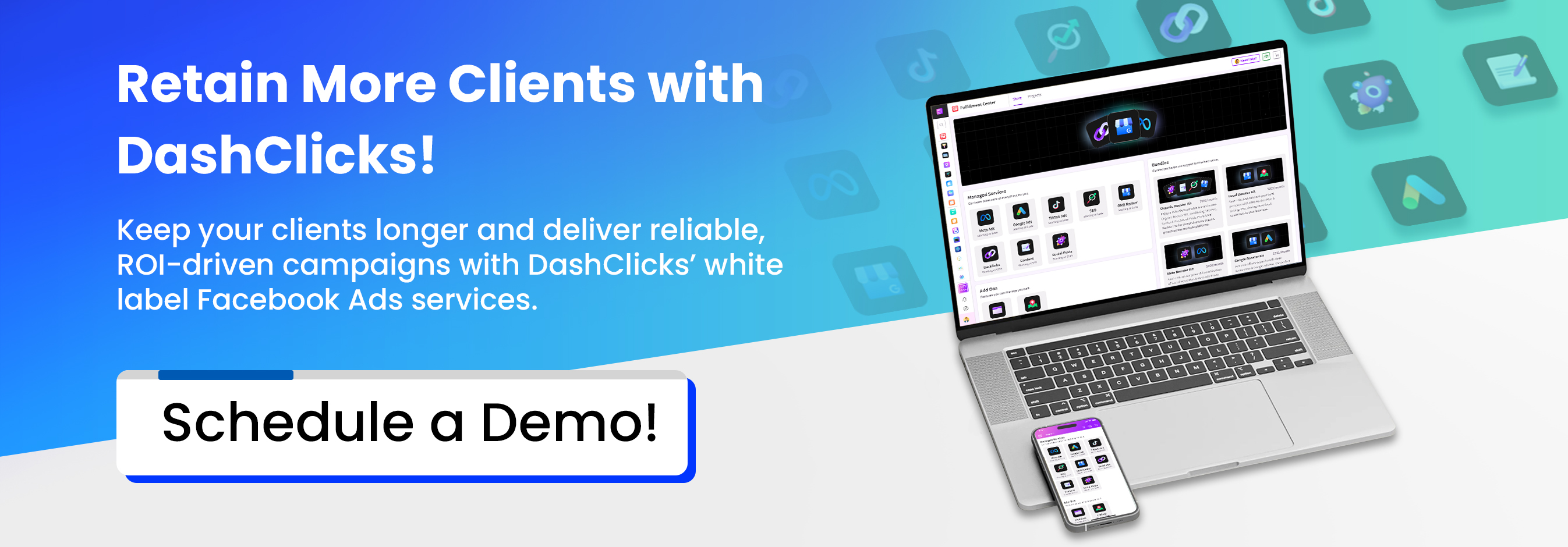
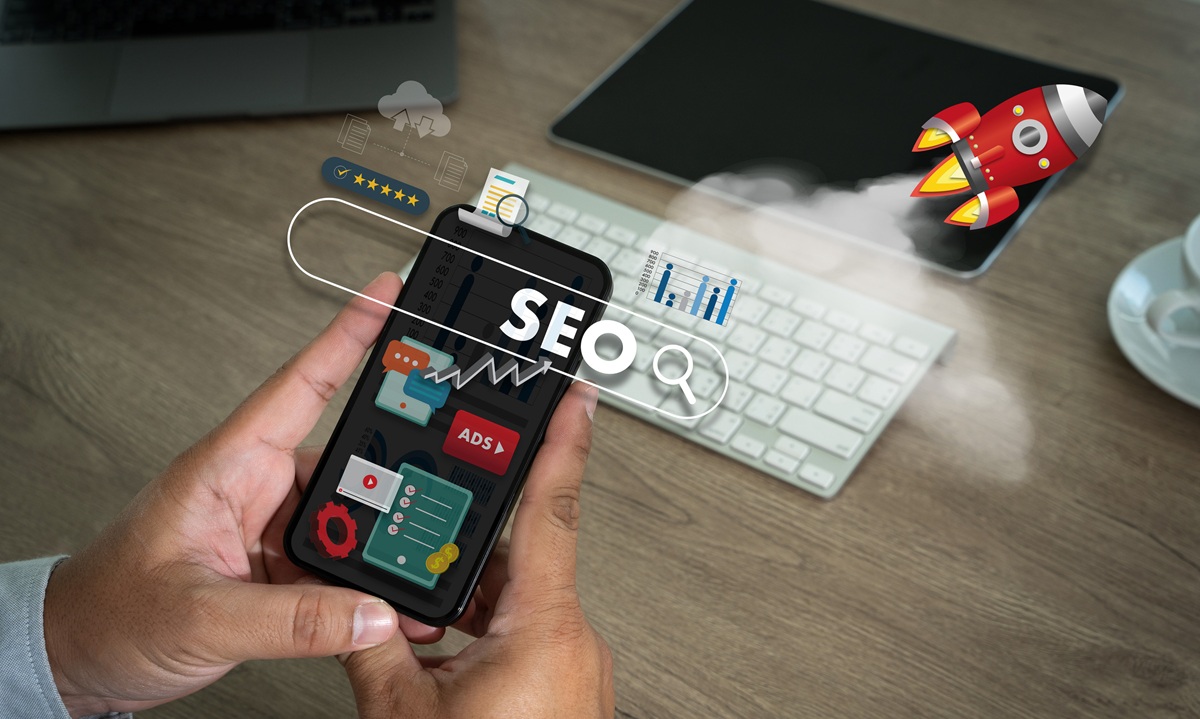
Handling Seasonal SEO Campaigns with a White Label SEO Partner
For many businesses, the year is defined by peaks and valleys. A retailer might make 40% of its annual revenue during the holidays, while a tax accountant's busy season is condensed into the first few months of the year. For digital marketing agencies, capitalizing on these predictable spikes in demand is crucial. This is where seasonal SEO comes in—a targeted strategy to boost online visibility and conversions during these key periods.
But here’s the problem: most agencies struggle to manage the sudden surge. A bandwidth crunch, lack of niche expertise, and mistimed execution can lead to overworked teams and underwhelming results. One missed season can cost a client relationship.
These challenges often lead to overworked teams and underwhelming results. But what if there was a way to scale your resources on demand, ensuring you have the firepower needed to nail every seasonal campaign? This is where white label SEO partners come in, acting as a flexible, powerful scaling engine for your agency. By providing the extra manpower and specialized knowledge, they help you deliver exceptional results during your clients' most critical times.
Understanding Seasonal SEO Fluctuations in Client Verticals
Seasonal SEO is the practice of optimizing a website for predictable spikes in search traffic tied to specific times of the year. These fluctuations aren't random; they are driven by consumer behavior and industry cycles. To master seasonal SEO, an agency must first understand the different types of seasonality that affect its clients.
These can be broken down into three main categories:
- Predictable Seasonality: This is the most common type, encompassing major holidays such as Christmas, Black Friday, and Valentine's Day. It also covers annual events like back-to-school shopping season and tax season. For e-commerce clients, these periods are make-or-break moments.
- Event-Driven Seasonality: This type is tied to specific, often one-time or recurring, events. Think of major sporting events like the Super Bowl, large music festivals, or industry conferences. These create short but intense bursts of search interest that can be highly valuable.
- Industry-Specific Seasonality: Many verticals have their own unique cycles. For example, law firms might see a surge in searches for end-of-year legal filings. The healthcare industry experiences peaks during open enrollment periods. SaaS companies often focus on annual renewal campaigns.
According to Google Trends, 70% of holiday shoppers say they begin their research online before the season even starts, highlighting why early SEO readiness is critical.
Identifying these patterns is the first step. Agencies can use a variety of tools to pinpoint when demand will rise and what search terms will be most valuable:
- Google Trends: Ideal for visualizing search interest over time and comparing the popularity of different keywords.
- Google Search Console (GSC): Provides historical data on which queries drove traffic to a client's site, revealing past seasonal patterns.
- Ahrefs & Semrush: These powerful SEO platforms allow you to analyze competitor traffic and keyword performance, uncovering their seasonal strategies.
Having this data is one thing; knowing how to act on it is another. This is where vertical-specific expertise becomes critical. A generic approach won't work when serving a diverse client base.
As one expert notes, "Failing to account for seasonality when making SEO projections and allocating spending exposes your business to unnecessary risk." An agency needs to understand the unique nuances of each client's industry to build a successful campaign, which is a compelling reason to partner with a specialized white label SEO company.
Case Snapshot: A boutique agency managing a local florist saw Valentine’s searches peak 3 weeks earlier than expected. With support from a white label SEO partner, they quickly launched optimized landing pages, ranking within days and doubling conversions.
Why Agencies Can’t Go Solo During Peak Season?
When a seasonal peak hits, the workload can quickly become overwhelming. Suddenly, your team needs to produce a high volume of content, perform technical audits, and launch extensive link-building campaigns—all at once. Scaling your in-house team for these temporary surges is often impractical due to the high costs of hiring, the time required for training, and the difficulty of finding qualified experts on short notice.
This is precisely where a white label SEO partner becomes an invaluable asset. They are designed to solve these exact problems.
Here’s how they fit into your seasonal campaigns:
- Extra Manpower: A white label SEO partner provides the additional workforce needed to handle high-volume deliverables. Whether it’s writing dozens of holiday-themed blog posts, conducting technical audits on seasonal landing pages, or executing a large-scale link outreach campaign, they have the resources to get it done without sacrificing quality.
- Access to Niche Expertise: Your agency might have clients in various industries like e-commerce, healthcare, SaaS, or local services. Outsourcing SEO services often brings tested playbooks and deep knowledge in these specific verticals. This expertise allows you to deliver more effective, targeted campaigns that a generalist approach might miss.
- Continuity and Optimization: Seasonal pages shouldn't be created and then forgotten. A white label SEO partner can ensure these valuable assets are kept live, updated, and optimized year after year. This helps retain link equity and ensures the pages are ready to rank as soon as the next season begins.
The ultimate benefit for your agency is the ability to serve more clients and take on more projects during peak seasons without compromising the quality of your work. You can confidently promise results knowing you have a reliable team backing you up.

Image Source: WriterZen
Competitive Edge: Agencies that use a white label SEO company like DashClicks can say to prospects, “We’re always season-ready.”
A Seasonal SEO Execution Framework (Agency + White Label Workflow)
A successful seasonal campaign requires a structured workflow that spans before, during, and after the peak period. By integrating a white label SEO partner into this framework, agencies can ensure every stage is executed flawlessly.
a) Pre-Season Preparation
The work for a seasonal campaign should begin months in advance. Last-minute efforts rarely succeed.
- Keyword Forecasting: Identify and target keywords for the upcoming season. Think long-tail, like “best holiday gift ideas for dad 2025.”
- Evergreen Page Optimization: Refresh and optimize existing seasonal pages early. Update content, check for broken links, and ensure the information is current.
- Technical Readiness: Prepare the site for a surge in traffic. This includes optimizing for site speed, ensuring mobile-friendliness, implementing relevant structured data (like for events or products), and checking crawlability.
- White Label SEO Partner Role: During this phase, your partner can handle the heavy lifting. They can perform technical SEO audit, scale content production to build out topic clusters, and refresh all metadata to align with new keyword targets.
b) In-Season/Peak Execution
When the season hits, agility is key. The market is volatile, and you need to be able to react quickly.
- SERP Monitoring: Keep a close eye on search engine results pages. Google often tests new features during high-traffic periods, so you need to adapt accordingly.
- Rapid On-Page Adjustments: Be prepared to make quick changes to title tag, meta descriptions, and internal linking to capitalize on emerging trends.
- Link Acquisition: Launch targeted link-building campaigns to acquire links to your seasonal pages, boosting their authority and relevance.
- White Label Partner SEO Role: Your partner can provide round-the-clock monitoring, allowing you to respond instantly to any changes. They can push quick optimization updates and handle the increased reporting load, freeing up your in-house team to focus on client communication and strategy.
c) Post-Season / Off-Season Strategy
Once the peak has passed, the work isn't over. This is the time to lay the groundwork for next year's success.
- Keep Pages Live: Don't take down your seasonal pages. Keep them live to retain the valuable link equity they’ve accumulated.
- Refresh Content: Update pages with "evergreen seasonal" content. For example, a "Christmas Gift Guide" can be updated to "Gift Ideas for Loved Ones" to maintain some level of engagement year-round.
- Collect Performance Data: Analyze the data from the campaign to build predictive insights for the next cycle. Identify what worked and what didn't.
- White Label SEO Partner Role: During the off-season, your partner can maintain SEO consistency. While your in-house team shifts focus to other priorities, the partner ensures your seasonal assets remain healthy and ready for the next peak. Since a reported 78.2% of SEOs charge monthly retainers, this ongoing maintenance justifies a year-round service model for your clients.

Unique Challenges Agencies Face (and How Partners Solve Them)
1. Bandwidth Crunch
During peak seasons, internal teams are often stretched thin, juggling content creation, technical audits, link-building, and client communication simultaneously. This overload can lead to rushed work or missed deadlines. A white label SEO partner acts as an elastic extension of your team, absorbing overflow work without the need for hiring temporary staff. This ensures campaigns stay on track and quality remains consistent, even when internal resources are maxed out.
2. Industry Nuances
Each niche has its own complexities—healthcare requires HIPAA-compliant messaging, legal marketing demands jurisdiction-aware strategies, and SaaS clients expect highly technical optimization tied to conversion funnels. Generic SEO tactics rarely deliver meaningful results in these spaces. White label SEO partners bring ready-to-use, industry-tested playbooks that are continuously updated to reflect best practices, giving your agency a competitive edge without months of research or trial-and-error.
3. Client Expectations
Seasonal campaigns carry high stakes; clients expect spikes in traffic to directly translate to revenue growth. Meeting these expectations requires precise timing, accurate forecasting, and ongoing performance tracking. White label SEO partners provide robust, transparent reporting dashboards and benchmark data, allowing agencies to demonstrate real-time progress and make data-driven adjustments, which strengthens client trust and positions your agency as a reliable seasonal growth partner.
4. Budgeting Conflicts
Scaling SEO efforts temporarily can strain client budgets, especially when peak-season work involves additional content, technical updates, or link-building. White label SEO services enable agencies to offer flexible, on-demand pricing models that align with seasonal demand. Instead of locking clients into long-term, fixed costs, agencies can scale services up or down, making it easier to justify increased investment during critical periods while maintaining profitability.
5. Quality Consistency Across Campaigns
Another challenge often overlooked is maintaining consistent quality when juggling multiple seasonal campaigns across different verticals. White label partners use standardized SOPs and quality checks to ensure that every deliverable—from blog posts to technical audits—meets professional standards. This consistency prevents errors, preserves brand reputation, and ensures clients receive dependable results regardless of seasonal pressures.
Client Retention Through Seasonal SEO Success
Delivering strong results during a client's most important sales period is one of the most effective ways to build long-term trust and secure client retention. When an agency flawlessly manages the pressures of a seasonal campaign, it demonstrates reliability, expertise, and a deep commitment to the client's success.
This is another area where white label partners provide immense value.
- Transparent Reporting: Top-tier white label SEO partners offer sophisticated dashboards that provide transparent, real-time results. This allows your agency to communicate progress clearly and effectively, aligning campaign performance with the client's revenue goals and managing expectations.
- Turning Seasonal Wins into Annual Retainers: A successful seasonal campaign is a powerful case study. You can use the data and ROI from one peak period to demonstrate the value of a year-round SEO strategy. By showing how off-season maintenance and preparation lead to better results, you can convert a short-term project into a lucrative annual retainer.
- Gaining a Competitive Edge: Agencies that leverage white label SEO partners can offer a compelling value proposition: "always-on seasonal readiness." This assures potential clients that you are equipped to handle their needs, no matter how demanding the season, setting you apart from competitors who may struggle to scale.
Choosing the Right White Label SEO Partner
Selecting the right partner is critical. Not all white label SEO providers are created equal, and you need one that can meet the unique demands of seasonal campaigns. Here are some practical steps to guide your choice:
- Demand Vertical-Specific Case Studies: Ask for proof that they have successfully managed seasonal campaigns in your clients' industries.
- Verify Technical SEO Knowledge: Ensure they have a deep understanding of technical SEO for seasonal pages, including site speed optimization, schema markup for events, and indexation strategies.
- Check Reporting Capabilities: Their reporting tools should be robust enough for intensive monitoring during peak campaigns. Real-time data is a must.
- Look for Flexible Contracts: The ideal partner will offer flexible contracts that allow you to scale services up or down based on seasonal demand.
- Ask About Collaborative Workflow: Inquire about their process for implementing changes. During peak days, you need a partner who can act quickly and collaboratively.

Further Reading: How to Choose a White Label SEO Partner That Delivers Real Results
How DashClicks Solves Seasonal SEO Challenges?
For agencies looking to master seasonal SEO, partnering with a platform like DashClicks offers a comprehensive solution. The platform functions as a fully integrated white label SEO services partner, providing not only fulfillment services but also the software to manage every aspect of a campaign.
During a seasonal rush, their platform allows you to instantly scale your operations. You can order white-labeled content, technical SEO audits, and link-building services directly through their dashboard, ensuring high-quality deliverables without overburdening your team.
The platform's real-time analytics and reporting tools are crucial during peak seasons, offering transparent, up-to-the-minute insights that you can share with clients. This seamless integration of software and services provided by DashClicks empowers agencies to stay agile, meet tight deadlines, and deliver exceptional results, turning seasonal pressures into opportunities for growth.
Scale Your Seasonal Success with White Label SEO
Seasonal SEO is a powerful growth lever for digital marketing agencies, but successful execution requires significant bandwidth and niche expertise. Trying to manage these intense periods with a fixed in-house team often leads to burnout and missed opportunities.
A white label SEO partner acts as your dedicated "seasonal surge team," providing the resources and specialized knowledge needed to deliver outstanding results for your clients. By collaborating with the right partner, you can navigate peak seasons with confidence, strengthen client relationships, and drive sustainable revenue growth. Position your agency as always-ready and turn seasonal challenges into your greatest competitive advantage.


Step-by-Step SaaS Platform Security Guide for Marketing Operations
In digital marketing, speed and trust are critical to success. Agencies that activate quickly get results, and today's teams are employing scalable SaaS tools such as CRM systems and project management platforms. Automation is necessary to activate results fast.
SaaS platforms come with a significant responsibility regarding data security risks. A data breach, poorly managed access, or an unintentional mistake could make for an expensive fix. Even worse, it harms the trust you've built with your clients and threatens the agency’s brand. In fact, organizations are investing more in SaaS security because it is perceived as necessary for long-term viability rather than an expense.
A proactive, step-by-step approach to SaaS platform security will make a considerable difference for agency owners and operations managers. What could often feel like compliance is actually supporting your team’s ability to increase efficiency and effectiveness in the agency world.
Here is a framework to help your team feel secure with your SaaS ecosystem and continue running the agency effectively.
Step 1: Secure the Gate with IAM (Identity and Access Management)
The greatest point of failure in any SaaS setting is unauthorized access, largely driven by compromised credentials. IAM (Identity & Access Management) is the foundational aspect of how access is granted and to which resources.
Require Multi-Factor Authentication (MFA) Everywhere
You must mandate Multi-Factor Authentication (MFA) for all administrative, client-facing, and other sensitive applications. MFA requires two or more verification factors from users to access an application, reducing the likelihood of compromised accounts even if passwords are stolen through phishing or trust-based social engineering attacks.

Image Source: Secret Double Octopus
Pro Tip: Don't treat MFA as a once-and-done exercise. Audit your MFA flows at least once a year to verify they continue to function as intended. Treat this as a necessary administrative task.
Adopt Single Sign-On (SSO)
Single Sign-On (SSO) improves agency productivity. SSO essentially enables users to access multiple applications with a single set of credentials.
- Unified Security: SSO provides centralized control over who can access which systems.
- Reduced Friction: SSO reduces password fatigue for clients and employees alike, increases job satisfaction, and enhances productivity.
- Improved Defense: When paired with MFA, SSO continues to maintain this layered defense regarding login access, without burdening the user with initial login efficiency.
Use SSO systems, such as Okta or Azure AD, to centralize authentication for all staff and third-party partners.
Implement Least Privilege Access (LPA)
The principle of least privilege (LPA) requires that users, applications, and processes be granted only the minimum permissions necessary to execute their tasks—and nothing more. This principle prohibits lateral movement in the event of an account being compromised!
Agencies should consider role-based access control (RBAC). These permissions can be defined by agency roles (e.g., Marketing Specialist vs. Account Manager). You can use role assignments in your Project Management Software or CRM to minimize access to excessive privileges.
Conduct privilege audits to eliminate access levels for accounts that have accumulated excessive access privileges beyond their intended scope over time.
Step 2: Achieve Total Visibility of Your SaaS Stack
The scalability of cloud solutions often leads to a proliferation of applications. When employees leverage solutions on their own without going through IT, it creates what's known as Shadow IT. Their invisibility is one of the most significant security risks and creates gaps in your compliance and risk mitigation.
Keep an Exhaustive Inventory of Applications
If you can't see it, you can't secure it. Marketing teams frequently adopt freemium tools or departmental SaaS without regard to procurement, creating unauthorized data paths that may also bypass security controls.
Introduce continuous application discovery tools that can inventory all applications sanctioned for access to company data in the enterprise and all (Shadow IT or unsanctioned) applications that can access company data in the enterprise.
Use SaaS Security Posture Management (SSPM)
SSPM is the central management tool for understanding the security settings of all of your sanctioned apps (e.g., your enhanced CRM software, InstaSites, etc). It is a purpose-built toolset for understanding misconfiguration, managing permissioning, and driving compliance across your SaaS tool stack.
- Misconfiguration Discovery: Incorrectly configured settings, whether public sharing of sensitive data, relaxed sharing, or even turned off MFA, are a leading cause of breaches. SSPM continuously monitors configuration status and compares it to a set of standards. It can notify you immediately of any deviation.
- Centralized Monitoring: SSPM produces a singular dashboard for reviewing security posture, allowing security teams to measure performance over time and monitor remediations undertaken by developers and other personnel.

Image Source: CybeReady
Use SSPM to monitor applications with high-risk profiles continuously to detect any security risks or compliance gaps (e.g., validate the configuration meets HIPAA or SOC 2 compliance).
Step 3: Securing Client Data with Encryption and Compliance
Securing the sensitive client data you oversee, whether in the campaign performance metrics provided by Social Media Reports or in the CRM databases, is foundational to establishing client loyalty.
Require Data Encryption
Encryption is at the core of protecting data in the cloud. Agencies must ensure that all sensitive data is encrypted:
- At Rest: Data at rest (in other words, stored data like in databases or cloud storage) must use strong standards of encryption, such as AES-256.
- In Transit: Data that is in transit (moving through your applications/systems, and client browsers) must use TLS encryption (HTTPS).
When you build a client’s website with an external platform, ensure that they are using SSL certificate and secure hosting so that you minimize fraud and data compromises.
Continuous Monitoring for Compliance
Employee and client trust, combined with scalability, comes from your compliance with applicable global standards (e.g., SOC 2, ISO, GDPR). If organizations fail to comply with these standards, they are subject to significant financial fines and can even be forced to stop operating pending an investigation.
Regularly monitor your SaaS configurations against predefined compliance frameworks. There are SaaS security solutions that can automate your compliance monitoring process, making your audit preparation much easier and reducing the expense and employee time spent redoing manual reviews.
Step 4: Securing Automation and Integrations
SaaS environments are built to improve operational efficiency through automation, whether it be driving sales pipelines or employing third-party integration to scale tasks. However, it is important to remember that these integrations rely on APIs (Application Programming Interfaces) to bridge across systems. If APIs are not designed securely, they can be attacked, serving as an entry point and exposing sensitive information.
The main goal of API security controls is to protect the endpoints that automate data exchanges.
- Authentication & Authorization: Use the industry standards of OAuth 2.0 type connectivity processes to ensure proper token usage. If third-party apps are hijacked, we certainly do not want malicious actors to have sustained access to multiple systems.
- Rate Limiting: To avoid Denial-of-Service (DoS) attacks, ensure there is some rate-limiting applied to API communication that will enable a user to send a flurry of communication to your system prior to being considered with another legitimate request.
- Input Validation: Sanitize and validate all input parameters to avoid injection attacks (SQL injection, some common terminology), sending malicious code through the API.
Implement integration approval workflows and an ongoing auditing process for third-party apps needing API/OAuth connectivity, to review the permissions requested and confirm they are narrow as a business function.
Step 5: Operationalize Security for Continuous Improvement
Security isn't a one-off project but an iterative process. You need to integrate continuous security improvements into your operational requirements and project management workflows.
Implement Continuous Monitoring and SIEM
One of the most significant steps in protecting your platform is instituting systems that continuously monitor user activities and identify non-conforming behavior.
- Detection: Leverage technologies that incorporate user behavior analytics that can identify when an account is acting strangely, such as multiple downloads of sensitive data or logins from locations that are not the norm.
- Logging: Introduce SIEM (Security Information and Event Management) solutions that combine and analyze security logs across every system that you implement, so that suspicious conduct can be identified.
- Response: Integrate SIEM with SOAR (Security Orchestration, Automation, and Response) features to help automate responses to threats (thus drastically reducing the time it takes to remediate incidents).
Be Prepared with Incident Response Planning (IRP)
When a breach occurs, it's about speed. Your agency needs a defined security Incident Response Plan (IRP) with allocations for action roles that will help manage the event.
The incident workflow consists of:
- Identification: Confirming that an incident has occurred and identifying the type of incident and level of severity.
- Containment: Isolating systems that are affected, to eliminate the potential for spread (i.e., disabling compromised accounts temporarily).
- Eradication: Defeating the root cause of the incident, such as malware or access by unauthorized individuals.
- Recovery: Restoring systems from clean backup environments and validating the entire environment.
- Post Incident Review: Reviewing the incident to learn and improve your security posture.
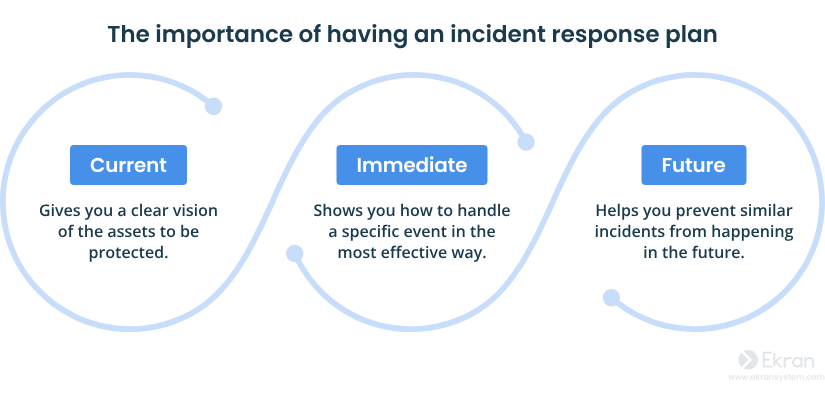
Image Source: Syteca
Champion Employee Training and Awareness
Human error remains one of the most common SaaS security risks available for attackers. Using phishing and social engineering techniques, attackers can easily exploit human errors. Even with excellent MFA implementation, it will be ineffective if employees are unaware of the latest tactics of threat actors.
Conduct regular training outlining the risks of Shadow IT and phishing. A well-informed team can be your best defense against all potential internal and external threats.
Conclusion
Protecting your SaaS platform does not mean restricting productivity; rather, it is about carefully optimizing operations and building resilience so that you can grow more, faster, and more securely. With the use of strong identity controls (MFA/SSO/LPA), centralized visibility through SSPM, and constant assessment of your automated environment, your organization reduces risk and enhances profitability.
Strong protections are your competitive advantage. Not only do they protect your clients' sensitive information, but they also maintain a compliance posture and allow you to position yourself as a trusted organization in the highly competitive space of digital marketing.
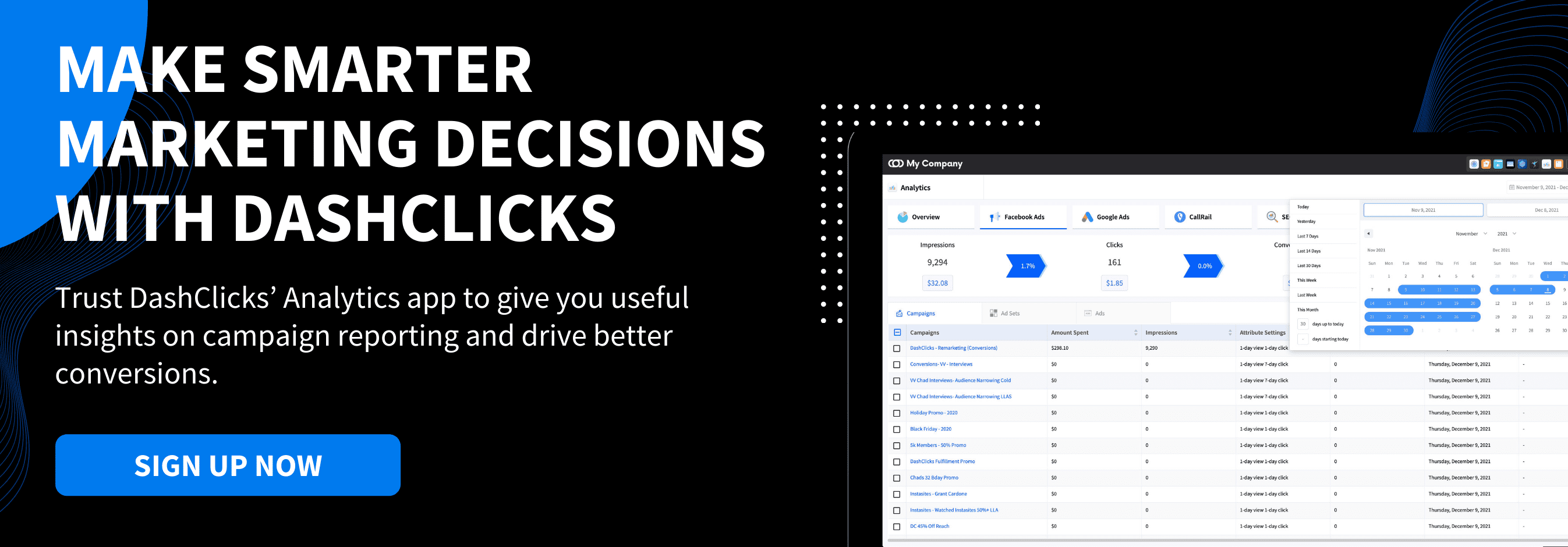

No results found.
Please try different keywords.
Get Started with
DashClicks Today
Get found online, convert leads faster, generate more revenue, and improve your reputation with our all-in-one platform.
.svg)
Unlimited Sub-Accounts
.svg)
Unlimited Users
.svg)
All Apps
.svg)
All Features
.svg)
White-Labeled
.svg)
Active Community
.svg)
Mobile App
.svg)
Live Support
.svg)
100+ Tutorials
.svg)
Unlimited Sub-Accounts
.svg)
Unlimited Users
.svg)
All Apps
.svg)
All Features
.svg)
White-Labeled
.svg)
Active Community
.svg)
Mobile App
.svg)
Live Support
.svg)
100+ Tutorials
.svg)
Unlimited Sub-Accounts
.svg)
Unlimited Users
.svg)
All Apps
.svg)
All Features
.svg)
White-Labeled
.svg)
Active Community
.svg)
Mobile App
.svg)
Live Support
.svg)
100+ Tutorials



.svg)
.svg)
.svg)
.svg)
.svg)


